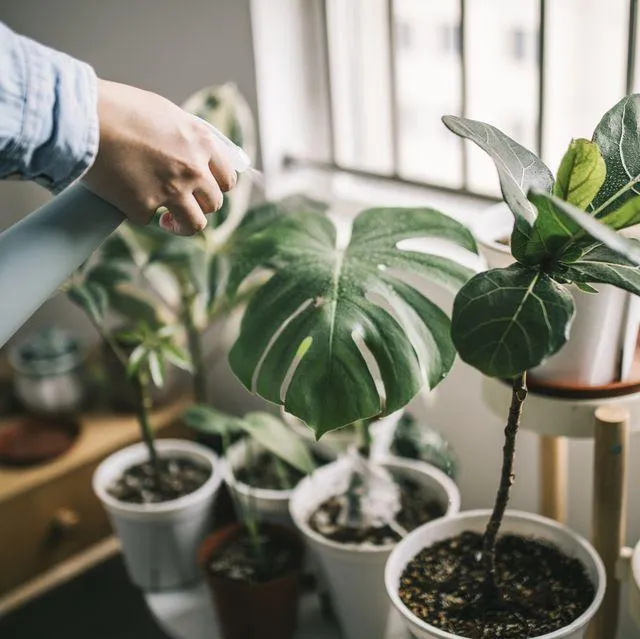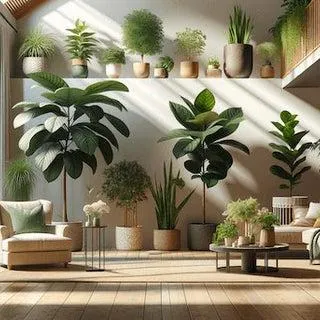The Best Indoor Plants to Bring Life to Your Living Room
If you’re looking to add some greenery and natural vibes to your living space, indoor plants are a great option. As someone who has struggled with keeping plants alive in the past, I know how daunting it can seem. But with the proper plant picks and care techniques, you too can have a thriving indoor jungle. In this article, I’ll break down the top living room plants to consider and provide tips to help them flourish.
Low Light Plants
- Pothos – Commonly known as devil’s ivy, pothos is one tough customer. It can thrive in very low light conditions like under furniture or away from windows. Just water when the top inch of soil is dry and you’re good. Totally low maintenance and hard to kill, in a good way.
- Snake Plant – With thick leaf strips that come in varied patterns, snake plants add architectural interest. They are basically indestructible and can go weeks without water. Often nicknamed “mother-in-law’s tongue” due to its resilience. A great starter plant.
- ZZ Plant – Those beautiful waxy green leaves look high class. ZZ plants can handle neglect like a champ and you’ll rarely have to mess with it. Just water every couple months and watch it thrive with minimal care. A wise choice for plant newbies.
Medium Light Plants
- Peace Lily – With its pretty white flowers and dark green leaves, peace lilies definitely live up to their name. Just water when the soil is dry and watch it flourish. A real drama queen that will wilt if thirsty to get your attention, kind of cute honestly.
- Cast Iron Plant – As the name implies, this plant is resilient to the max. Flat strappy leaves that come in lime green or dark variegated varieties. Water infrequently and no problem. It can take weekly neglect like a champ.
- Chinese Evergreens – These foliage plants add lush tropical flair. Cute waxy leaves come in tones of green, cream, or burgundy. They tolerate lower light and occasional dry spells. An eye-catching choice that’s still pretty easy going.
Higher Light Plants
- Dieffenbachia – Tropic beauty with bold patterns on its broad leaves. Make sure it gets at least medium light or the markings won’t show as vibrantly. Water when top inch is dry. Not the most obedient kid but rewarding with it’s architecture.
- Monstera – Those iconic fenestrated leaves have been popping up everywhere but for good reason, they are gorgeous! Give them a bright spot to really bring out the holes. Water when dry and watch them climb. A leafy showstopper.
- Rubber Plant – Tall upright fronds add height and visual interest. Give them indirect sun and occasionally wipe down the dark waxy leaves. Thrives with some neglect but rewards steady care with rapid growth. A satisfying watch-it-grow pick.
Now that you have some top plant contenders, how should you care for them to keep them thriving long term? Proper watering, feeding, and pest prevention are key as plants in living rooms face unique challenges. Some things to bear in mind:
Watering: Feel the soil before watering rather than going by a schedule. Living room plants dry out more slowly than outdoors due to lower light levels and less airflow. Stick your pinky in the top inch and only water if it’s dry to avoid root rot from over-wet soil.
Fertilizing: During the active growing season, once a month dilute water soluble fertilizer to feed your plant pals. This helps them stay healthy and push out new growth. Read package instructions for mixing ratios.

Pruning: Remove any yellowed or droopy leaves periodically to maintain a bushy appearance. Snip back leggy growth or vines that wander with pruning shears. This keeps plants compact.
Pots: Terracotta is porous and allows soil to breathe and dry out between waterings. Plastic and glazed ceramic pots hold more moisture so watch for root rot. Ensure drainage holes too.
Pests: Check undersides of leaves regularly for pests like spider mites or scale insects, especially if plants look unhealthy. Scrape them off with an old toothbrush dipped in rubbing alcohol. Plant hospitals like Neem oil are also handy remedies. Periodic pest prevention is wise for living room conditions.
I should know, my Monstera got spider mites a few months back despite my best efforts. Man, those suckers spread quickly in low airflow environments! A diligent round of rubbing alcohol and Neem rids got rid of them thankfully. Gotta stay on top of pest patrol. So remember diligence with watering, feeding, and pest checks can save you plant parent headaches.

Speaking of pests, another human annoyance for living room plants are pet hazards like nibbling paws or curious tails. I found myself constantly scolding my cats for harassing the foliage, maybe they were just jealous of the attention my new plant children were getting! Many large-leafed or non-toxic varieties like pothos, snake plant or Chinese evergreen work well in homes with fur babies. Always research plant toxicity just in case. Your pet’s safety comes first.
When choosing pots, don’t forget aesthetic value either. Coordinating pottery, macrame hangers or woven baskets elevate indoor plants to interior design features. Style them together for maximum statement. Mix in short filler plants in front to round out textural vignettes. You can even get creative with unexpected pots like galvanized buckets or ceramic planters with cool patterns. Express your personal flair while housing your greenery.
With a little TLC, the right picks, and some styling savvy, adding indoor plants to your living space can totally transform it from drab to fab. In time, seeing them thrive and knowing you supported that growth through care can feel very rewarding. It’s like having a little indoor garden to nurture alongside your daily activities. Does it take effort? Sure, but seeing others admire my live plants gives me a sense of pride and accomplishment each day. I hope these tips help you find plants that put the life back into your living room too! Happy planting!
Indoor Plants for Living Rooms
| Plant | Light Needs | Water Needs | Care Level |
|---|---|---|---|
| Snake plant | Low | Let dry between waterings | Low |
| Pothos | Low to medium | Let soil dry slightly between waterings | Low |
| Chinese evergreen | Medium | Water when top inch of soil is dry | Low |
| Peace lily | Medium | Water when soil is dry | Low |
| Philodendron | Low to bright indirect light | Let soil dry slightly between waterings | Low |
FAQ
-
What kind of indoor plants are best for a living room?
Plants that don’t require too much light are basically your best choice for a living room. Pothos, snake plants, and spider plants can live with kind of low light. They’re pretty easy to take care of too.

-
How often should I water indoor plants?
Most indoor plants need water around once a week. The soil should dry out somewhat between waterings, but you don’t want it to become totally dry. Stick your finger in the soil and water when the top inch or two feels dry. At the same time, overwatering can also be a problem, so be cautious about how much you give them.
-
How can I tell if a plant needs more light?
If a plant starts looking leggy or pale, it’s probably not getting enough light. The stems will get really long trying to reach for sunlight. Or the leaves may start yellowing. You can move it closer to a sunny window or get a grow light. I once had an amazing pothos that just about took over my whole living room! It basically loved the amount of light it was getting.
-
What’s the best way to remove dust from plant leaves?
Gently wiping the leaves with a damp cloth works well. You can also use a small paintbrush or make a homemade leaf cleaner by mixing a bit of dish soap into a spray bottle filled with water. Spritz the leaves and wipe clean with a microfiber cloth. Be careful not to overwash, though—some plants don’t like too much moisture on their leaves.
-
How often should I fertilize indoor plants?
Most houseplants only need fertilizer during their main growing season, which is typically spring and summer. You can fertilize them once a month or so during that time. Follow the instructions on the fertilizer package for the right amount. Maybe go a little lighter at first since it’s easy to overdo it. You don’t want burn the roots!

-
Will having indoor plants improve air quality?
Studies show that many common houseplants are quite good at removing chemicals from the air, like formaldehyde, benzene, and trichloroethylene. These are compounds released in gases from things like building materials, cleaning supplies, and cooked foods. Plants can apparently cleanse up to 87% of toxins from the air in 24 hours. So in short – yes, a few green friends may help breathe a little easier. Unless of course you have really awful allergies to certain plants! Then they could make things worse rather than better.
-
What’s the best way to transport plants to a new home?
Protect the plant from drafts and sun when moving it in a vehicle. Place it in a partially closed cardboard box with holes poked in the bottom for ventilation. You can also put a plastic bag loosely over the plant and tie it to reduce mess if it gets jostled. Whatever method you choose, go slow to prevent damage. Carefully transporting our plant pals makes the new place feel a little more like home a little more quickly.
